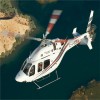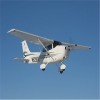- A professional pilot is an individual who is compensated for his or her ability to fly an aircraft
- There are various types of professional pilots and they are normally classified by the type of company they fly for, or by the type of flying services they provide
-
The major types of professional pilots are:
Commercial Airline Pilots who fly for an international, domestic, or regional airline
Commuter Pilots who fly normally somewhat smaller airplanes than the airlines
Corporate Pilots who fly for corporations that have their own aircraft
Charter Pilots who fly for companies that provide charter services to the public
Agriculture Pilots who fly aircraft that are used for crop dusting
Certificated Flight Instructors who teach individuals how to fly - Advancing in the industry is generally related to the total number of flight hours that the pilot has logged, and the specific type of aircraft that he/she is qualified to fly
- In order to fly as a professional pilot, the FAA states you must obtain a commercial pilot certificate in order to be legally compensated
- The commercial pilot certificate can be achieved by meeting the FAA requirements dictated in either FAA part 141 or FAA part 61
- Under FAA part 141 you could become a commercial pilot with 190 hours of flight time, but you must attend mandatory ground school classes
- Under FAA part 61 there are no mandatory ground school classes, and the required flight time is 250 hours
- With some FAA part 141 organizations the mandatory ground school classes can add as much as $11,000 to the cost of your training
- With FAA part 141 you are trading ground school classes for flight time
- The required testing is exactly the same for all commercial pilots regardless if you are being trained under FAA part 141, or FAA part 61 regulations
- Your actual commercial pilot certificate conveys that you can be legally compensated for flying an airplane, but does not indicate if you were trained under part 141 or 61
- Quite often you will spend less money, and obtain more flight hours when you are trained under FAA part 61 as opposed to FAA part 141 because you do not have to pay for mandatory ground school classes
- The mandatory ground school classes have become obsolete because all major ground training is now done using state of the art DVD interactive home study training augmented with one on one individual training if necessary
- The total flight hours obtained may make it easier to advance in the industry
- When you send a resume to a prospective company your total flight time can be the major factor to meet their hiring minimums
- In the real world even with 250 hours of flight time and a commercial pilot certificate there are very few entry level jobs available for you in the industry because of FAA requirements and insurance minimums
- A realistic approach to get your professional career off the ground is to become a certified flight instructor
- As a certified flight instructor each time you fly with a student you are allowed to add that flight time to your total flight hours, and you are getting paid for your training skills
- Aviation Professionals takes a real world approach towards your career as professional pilot by incorporating your training to become a commercial pilot with training towards a flight instructor certificate
- This combined training concept will save you time and money, and it also produces a better commercial pilot because you will obtain more in-depth flying skills
- The core of the concept is while other pilots are learning only how to perform a maneuver you are learning how to simultaneously perform, and explain the maneuver which is exactly what is required of a flight instructor
- Aviation Professionals will start grooming you to become a certified flight instructor while you are working on your private pilot certificate
- This concept produces a seamless training experience from your private pilot certificate to your flight instructor certificate
- The industry norm is to first be trained to become a commercial pilot, and then after you have achieved that they will train you to become a flight instructor which means extra training, and more money
- Our expertise in the industry comes from our 40 years of experience of training pilots in some of the world's busiest airspace, and to our knowledge every major airline in the United States has a pilot who was trained by Aviation Professionals













